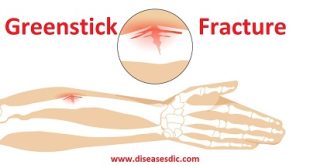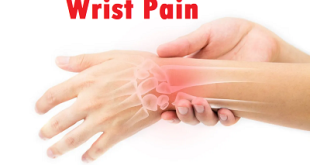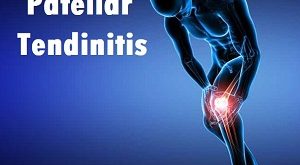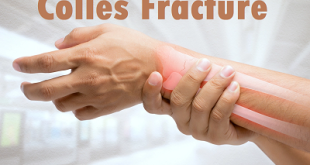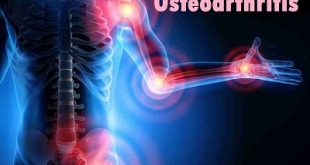Definition
Osteoid osteomas is a type of bone tumor. It is not cancer (benign). It remains in the same place it starts. It will not spread to other bones or parts of your body. The center of an osteoid osteoma is the nidus. It consists of growing tumor cells, blood vessels, and cells that eventually form bone. A bony shell surrounds the nidus.
Usually, osteoid osteomas are small tumors that measure less than an inch across. They typically form in the long bones, especially the thigh (femur) and shin (tibia) bones. They may also develop in the bones of the spine, arms, hands, fingers, ankles, or feet. They can occur in other bones. But that is much less common.
Osteoid osteomas tend to be painful. They cause a dull, achy pain that can be moderate to severe. The pain is often worse at night. Osteoid osteomas occur more often in men than in women. They typically occur in children and young adults up to about age 24. But they can occur at any age.
 Osteoid Osteomas
Osteoid Osteomas
Prevalence
Osteoid osteomas account for 1/8 to 1/10 of symptomatic bone tumors and 5% of all primary bone tumors. Osteoid osteomas are the 2nd most common benign primary bone tumors resulting in 10-12% of all benign tumors. Osteoid osteomas occur in children and young adults between the ages of 7 and 25. All ages can be effected but 75-80% of patients are less than 25 years of age. The male to female ratio is 2-3:1 putting boys and young males at the greatest risk for developing osteoid osteomas.
Classification of Osteoid Osteomas
There are two classification schemes for osteoid osteoma, both of which describe the location of the tumor in bone.
With the first scheme, tumors are classified as cortical, medullary (cancellous), or subperiosteal on the basis of radiographic findings. This method is more traditional and more frequently used than the other classification scheme.
With this scheme, cortical osteoid osteomas are the most common. They usually occur in the shaft of the long bones, especially the femur and tibia.
Subperiosteal osteoid osteomas are the least common. With the other, recently suggested classification scheme, tumors are categorized as subperiosteal, intracortical, endosteal, or intramedullary on the basis of computed tomographic (CT) and magnetic resonance (MR) imaging findings. With the use of cross-sectional imaging, it has been suggested that subperiosteal osteoid osteomas are more common than was initially believed. It also has been postulated that intracortical and medullary lesions migrated from subperiosteal origins as a result of bone remodeling, with subperiosteal deposition and endosteal erosion.
Causes of Osteoid Osteomas
Researchers are still working to understand what causes osteoid osteomas to form. They seem to start with inflammation in the bone. When that occurs, blood vessels in the area start to expand and grow. Bone-producing cells called osteoblasts soon start to multiply.
They lay down the building blocks for bone. Cells that break down bone, called osteoclasts, also become part of the osteoma. The growing tumor puts pressure on the surrounding bone. This hardens and forms a shell around the tumor.
Often there is no history of injury or infection at the site where the osteoid osteoma forms.
Osteoid Osteomas Symptoms
The main symptom of an osteoid osteoma is achy, dull pain. This pain often gets worse at night. Activity has no effect on the pain.
Other symptoms may include:
- Bone deformity.
- Gait disorders.
- Joint pain and stiffness.
- Decrease in muscle size (atrophy).
- One leg being longer than the other (with a thigh or shin tumor).
- Sciatica and scoliosis (with a spine tumor).
- Swelling.
Symptoms of a tumor near your joint may include:
- Joint effusion (swollen joint).
- Osteoarthritis.
- Stiffening and tightening (joint contractures).
Complications of Osteoid Osteomas
Osteoid osteomas can be quite painful. A few complications can occur because of swelling linked to the bone and the location of the osteoma. Examples include:
- Scoliosis. This can occur if the osteoid osteoma is in the spine.
- Enlargement or deformity of a bone. This can occur if the osteoid osteoma is in a small bone.
- Deformity or stiffness of a joint. This can occur if the osteoid osteoma is at the end of a bone.
Osteoid Osteomas Diagnosis
The doctor will perform a physical examination and use imaging studies and other tests to diagnose your or your child’s tumor.
Imaging Studies
X-rays: X-rays create clear pictures of dense structures such as bone and are helpful in diagnosing an osteoid osteoma. An X-ray of the painful area may reveal thickened bone surrounding a small central core of lower density – a distinctive characteristic of the tumor.
Computerized tomography (CT) scan: A CT scan provides a cross-sectional image of your bone and can also be helpful in evaluating the lesion. A CT scan will commonly show the nidus, or center of the tumor.
Biopsy: A biopsy may be necessary to confirm the diagnosis of osteoid osteoma. In a biopsy, a tissue sample of the tumor is taken and examined under a microscope. The doctor may give you or your child a local anesthetic to numb the area and take a sample using a needle. A biopsy can also be performed as a small operation. If imaging studies are highly suggestive of an osteoid osteoma, the doctor may not perform a biopsy.
Other tests: To exclude other possible bone problems such as an infection or malignant tumor, the doctor may order additional imaging studies. Certain blood tests may also be used to rule out an infection.
Treatment of Osteoid Osteomas
Traditional treatments for osteoid osteoma
Most of these tumors can be successfully treated. However, they can come back. Prompt medical attention and aggressive therapy are important for the best prognosis. Regular follow-up care is essential for your child.
Treatment may include:
- Percutaneous radiofrequency ablation: A minimally invasive day procedure, percutaneous radiofrequency ablation uses radiofrequencies passed beneath the skin through a needle to kill the tumor cells by heating them to a high temperature.
- Curettage and bone grafting: During this operation, the tumor is scraped out of the bone with a special instrument. The remaining cavity is then packed with donor bone tissue (allograft), bone chips taken from another bone (autograft), or other materials.
- En bloc resection: The surgical removal of bone containing the tumor is necessary if the tumor is located in the pelvis or some other site. Internal fixation, with pins, may be required to restore the structural integrity of the bone. This option is rare for patients with osteoid osteoma.
 Diseases Treatments Dictionary This is complete solution to read all diseases treatments Which covers Prevention, Causes, Symptoms, Medical Terms, Drugs, Prescription, Natural Remedies with cures and Treatments. Most of the common diseases were listed in names, split with categories.
Diseases Treatments Dictionary This is complete solution to read all diseases treatments Which covers Prevention, Causes, Symptoms, Medical Terms, Drugs, Prescription, Natural Remedies with cures and Treatments. Most of the common diseases were listed in names, split with categories.

